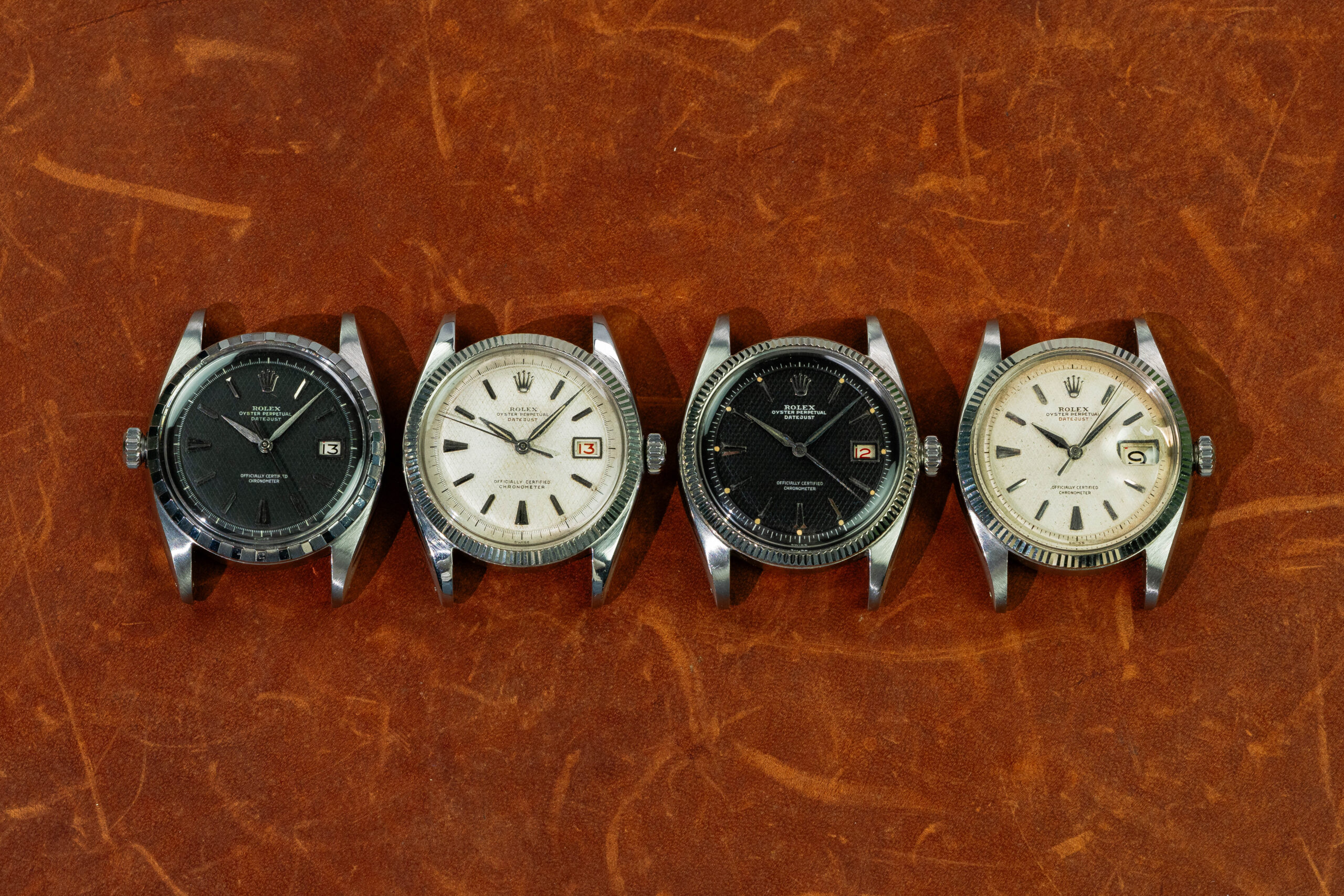
Rolex’ first steel Datejusts
The steel Datejust is by many considered the perfect one watch collection. Not only because of its entry-level price point, but also because of its adaptability, practicality, and iconic looks. With all its possible configurations, this timeless wristwatch has been enjoyed by a wide variety of people over the past 80 years. It probably doesn’t come as a surprise that I personally prefer the older models. So today we take a look at where it all started and discover the groundbreaking beauty of the archetypical steel Datejust.
History
In the mid 40’s Rolex launched its first automatic wristwatch with calendar function; not yet dubbed as the Datejust. This chronometer certified timepiece had a recess in the dial at the 3 o’clock position, displaying the date wheel underneath. Back than this was quite a unique way of showing the date, rather than the “pointer date” one usually encountered in this period.
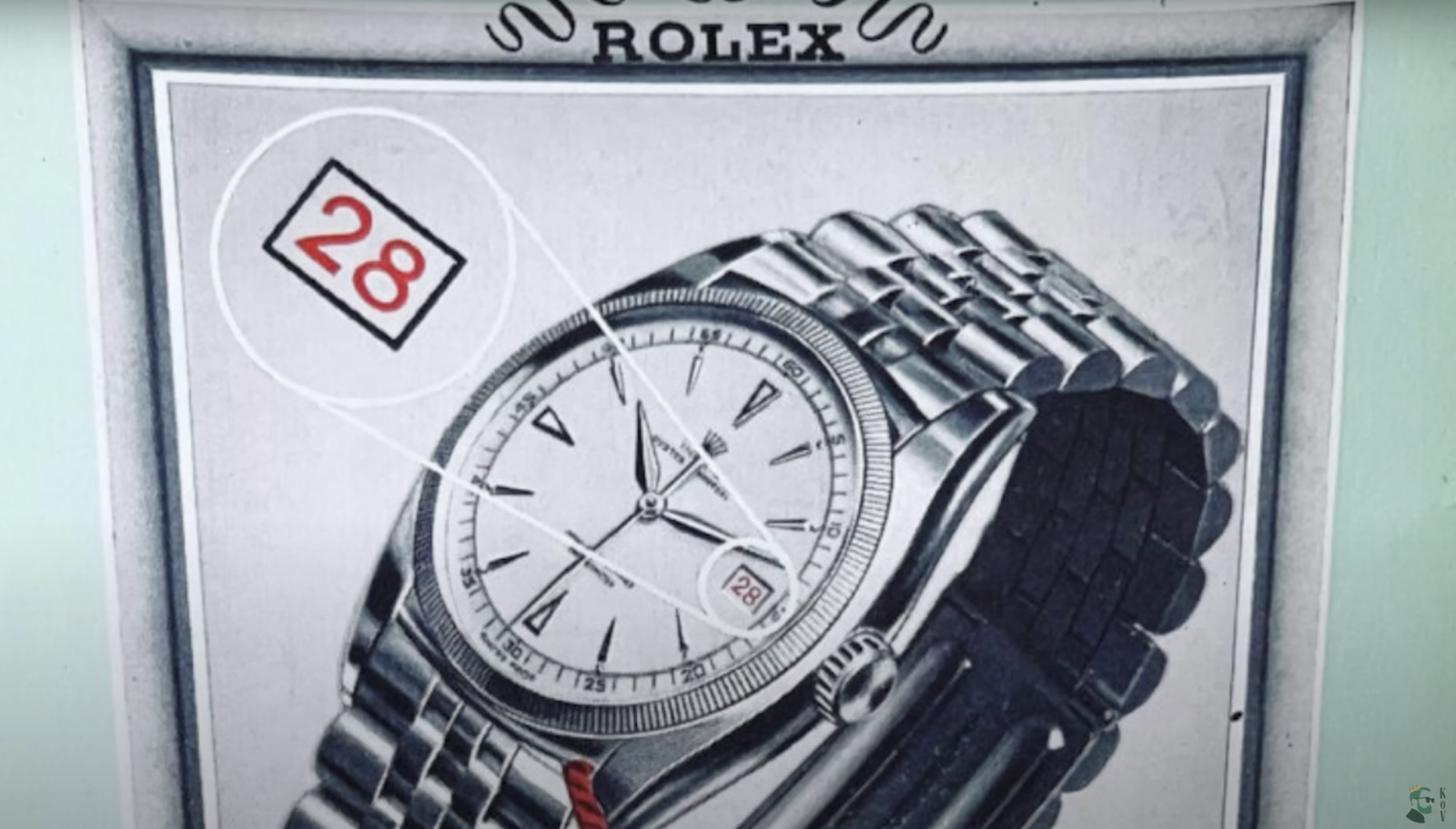
This first reference (4467) already showcased a 36mm measuring Oyster case, with decorative fluted bezel. Another important aspect is the Jubilee bracelet, crafted especially for this new line. This pioneering product was seen as the flagship model and therefore, logically, only available in precious metal. In 1956 the prestige shifted towards “the President”. But 3 years prior to the introduction of the first Day-Date, Rolex launched the first Datejust in steel. Arguably this is the best epoque to find a coveted steel Datejust; since this model was still regarded as one of the most luxurious wristwatches, you can expect the utmost finishing and an interesting design language.
Case
The first steel Datejust was ushered in under two references, depending on the bezel finish, it was either a 6304 or 6305. The first mentioned is more uncommon to encounter and had a smooth-finished, slightly domed bezel. The 6305 can be divided in two series. Initially a white-gold milled bezel was applied to the case. These are more finely fluted than the later bezels from the 16xx series onwards, and therefore are known as “coin-edge”. The 6305-2, has an engine turned bezel with alternating smooth-squares and patterned-squares, executed in stainless steel.
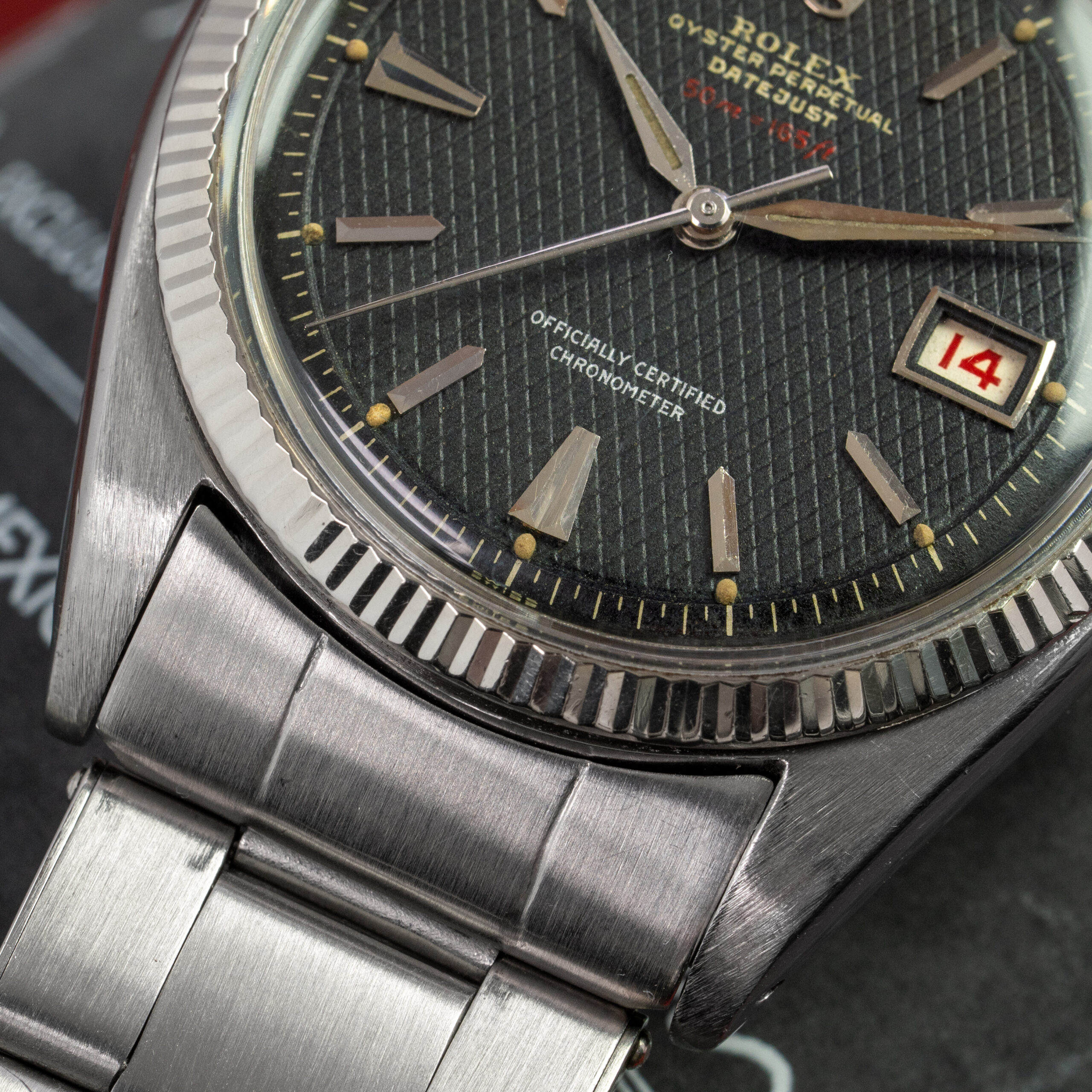
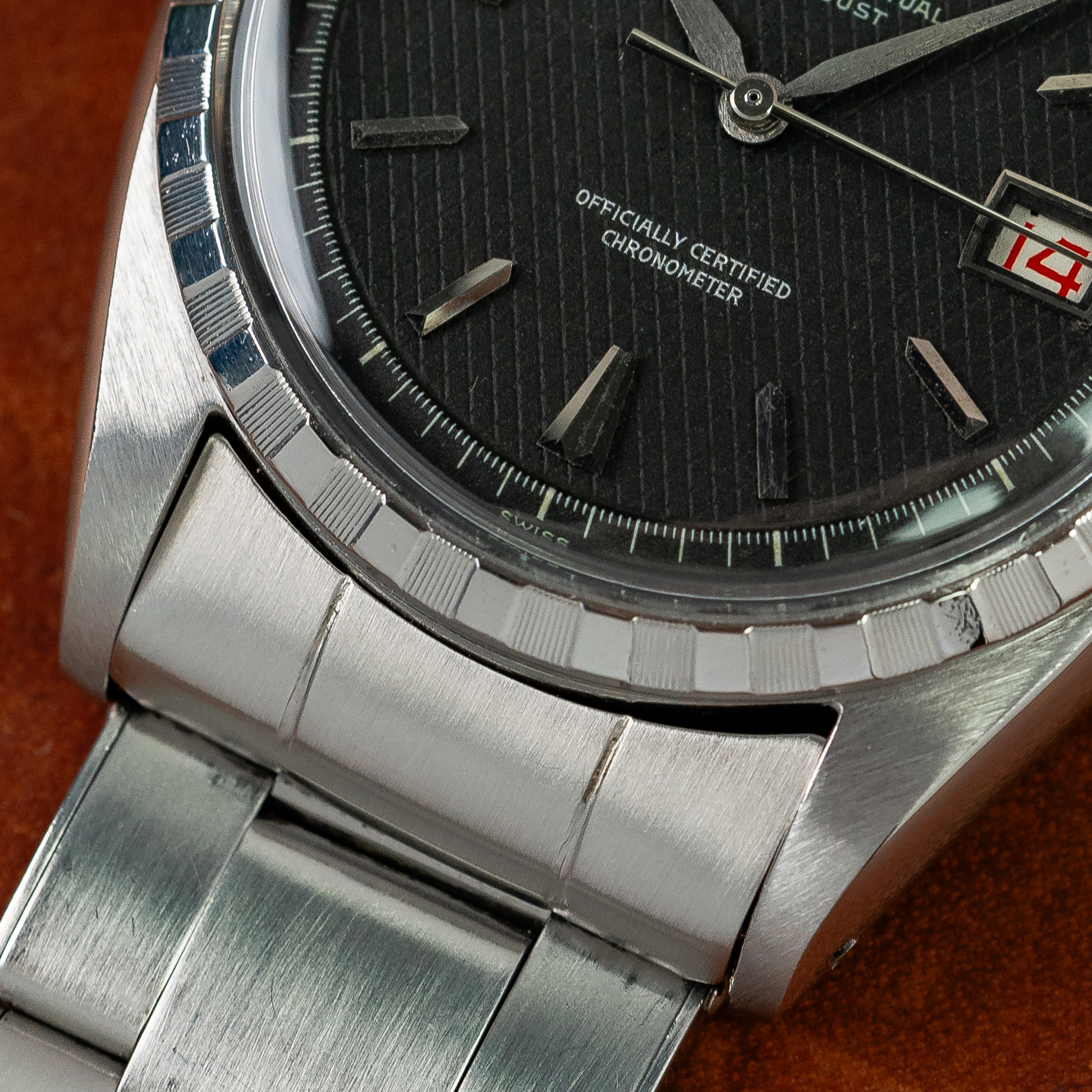
The case itself measures a perfect 36mm. The men’s one has always been like this and even today it is still considered as the perfect circumference for a Datejust. (unless you have something to compensate and take the disproportionate one on steroids). Due to the domed caseback, these so-called “Ovettone” sit a bit higher on the wrist. The lug-width is 20mm and depending on the period, it possibly has lugholes. In between the lugs one would usually find a folded Jubilee, the bracelet mostly associated with the Datejust. Optionally one chose the riveted Oyster instead.
Glass
The crystals used in this period were made from plexiglass. One of the most recognizable characteristics of Rolex is the “Cyclop lens” to magnify the date function. This was developed for the Datejust and the patent was filed in 1952, right before the launch of the 6305, making that the first reference to factory feature this novelty. Wilsdorf quickly understood the significance of this invention and to protect it Rolex released a legal threat via the press, aimed at anyone trying to copy this. This loupe wasn’t embraced by everyone, so depending on the preference of the client, it left the boutique with or without.
Crown
Over to the winder. This 6mm crown is ridged to increase grip and sports the Rolex coronet above a plus-symbol, known as a Brevet-crown. “Brevet” is French for “Patent” and referred to their water and dustproof Oyster system. Obviously, it is still exceedingly rare, but there are multiple 6305’s with the crown on the left-hand side. There is even an official ad from an earlier model with this oddity.
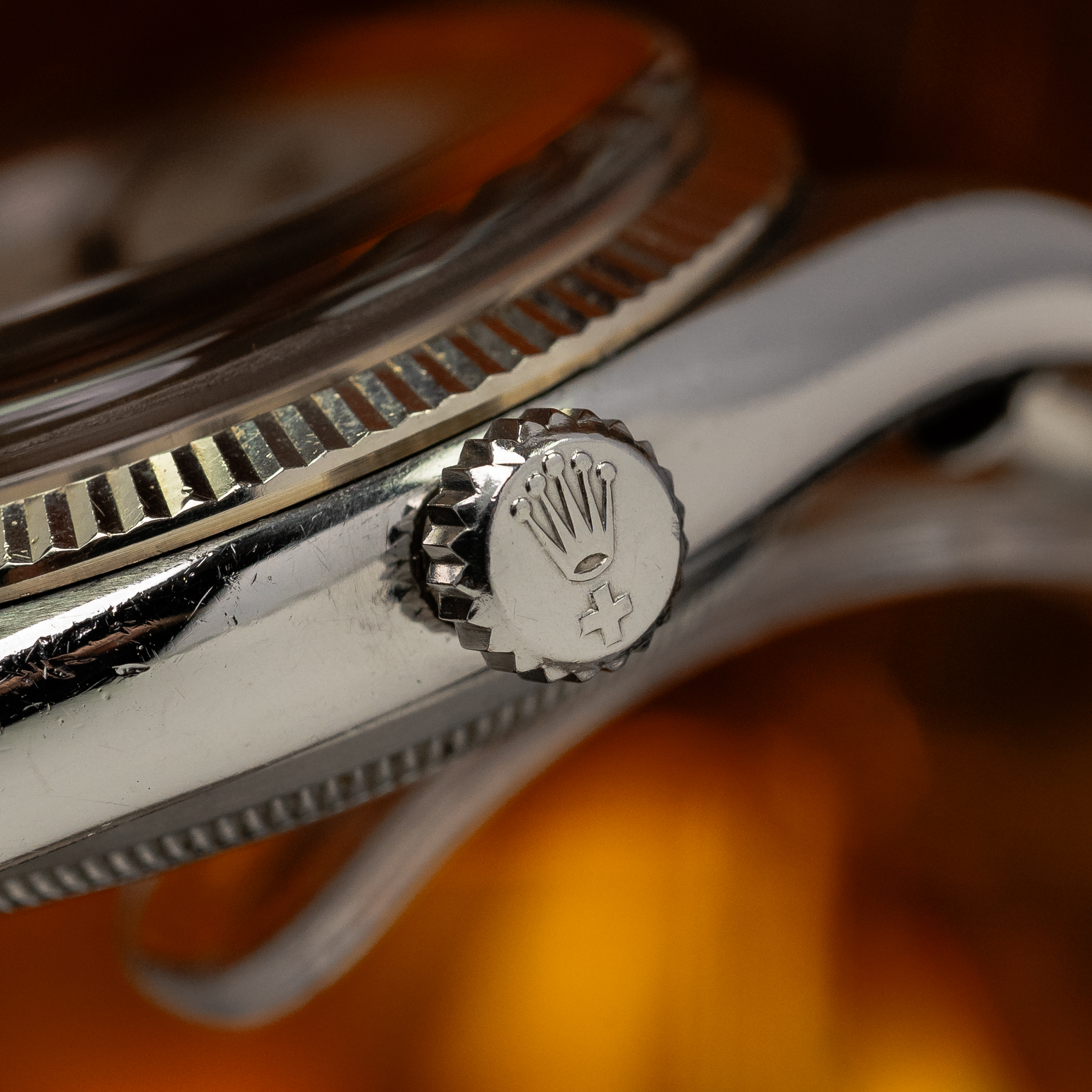
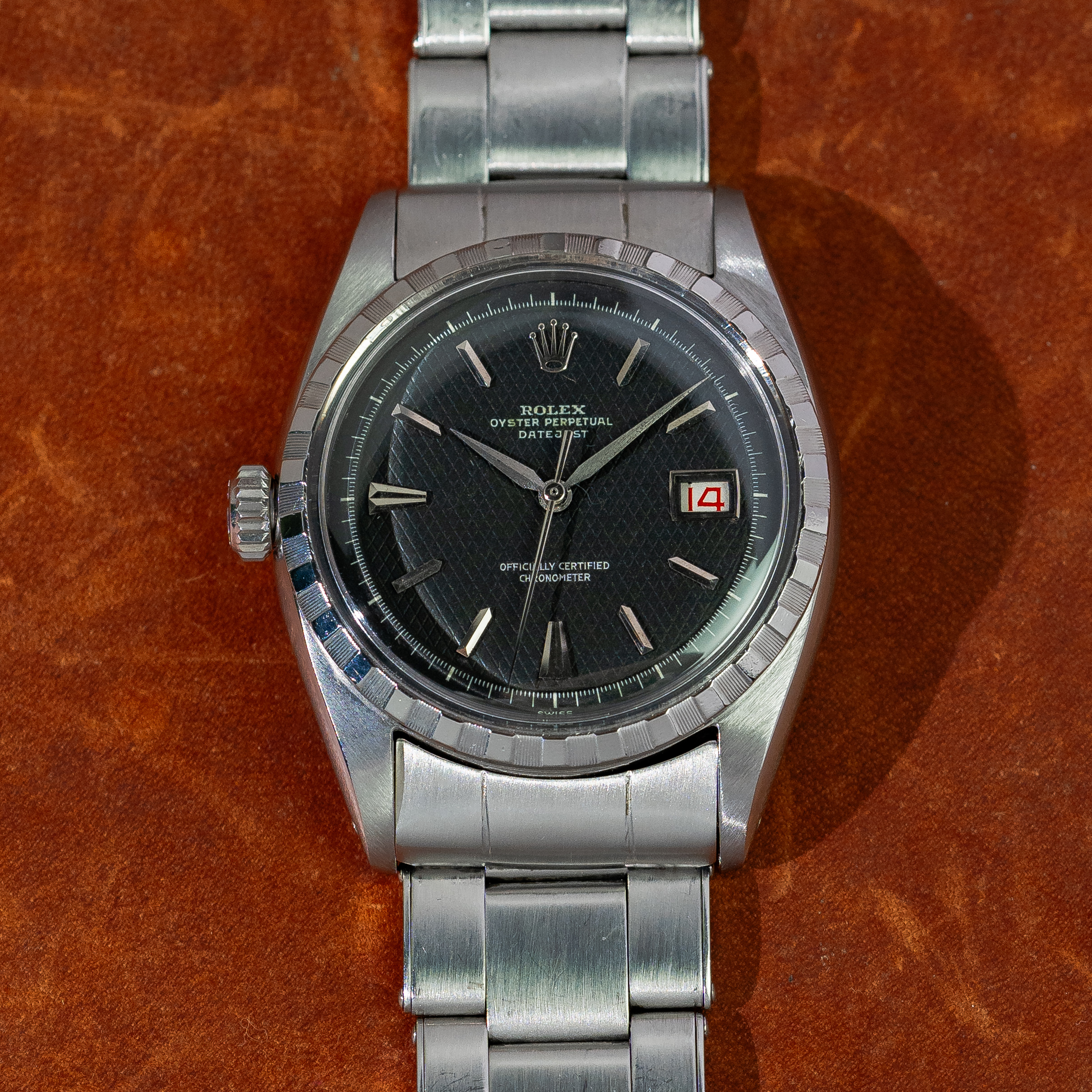
Movement
The “bubbleback” houses a chronometer rated movement under cal. A296. Close to 30mm in diameter and quite thick, as all automatic calibers by Aegler were at that time. This workhorse engine was used for multiple references during the 50’s. It does not feature a quickset function as this invention wasn’t utilized until the 70’s. The date wheel has the even numbers in red and uneven in black, referred to as “Roulette”.
Dial & hands
For the dial there were merely two options: either dark or light colored. This was before blue, grey, champagne etc. was used. The lacquer might discolor over time due to outside agents and result in a brownish surface. This effect possibly being enhanced by the use of radioactive luminous compound at the markers and in the hands. All dials were signed “Swiss” at the bottom and followed up on the “Swiss made” signature from earlier generation Datejusts. Service dials tend to display “T Swiss T” as the radium was substituted by tritium in the 1960’s. Depending on the country of delivery it might lack lume as a whole.
In the 50’s, before the use of the well-known “SCOC”, the dial of the Datejust reads “Officially Certified Chronometer” above the 6 o-clock position. At the opposite side of the dial, under the brand name, it says “Oyster Perpetual” either with or without a hyphen in between. Some light-colored dials have the model name in red. Seen only a handful of times; is the red depth-rating; something that was done during the mid 50’s on numerous models.
There are baton markers with faceted ends or elongated, pointy indices with thicker 6 and 9; to bring a nice balance to the dial. Besides the applied markers and coronet, “Rolex” can also be added in metal, alongside a framed date aperture. This practice hasn’t been seen ever since on successors.
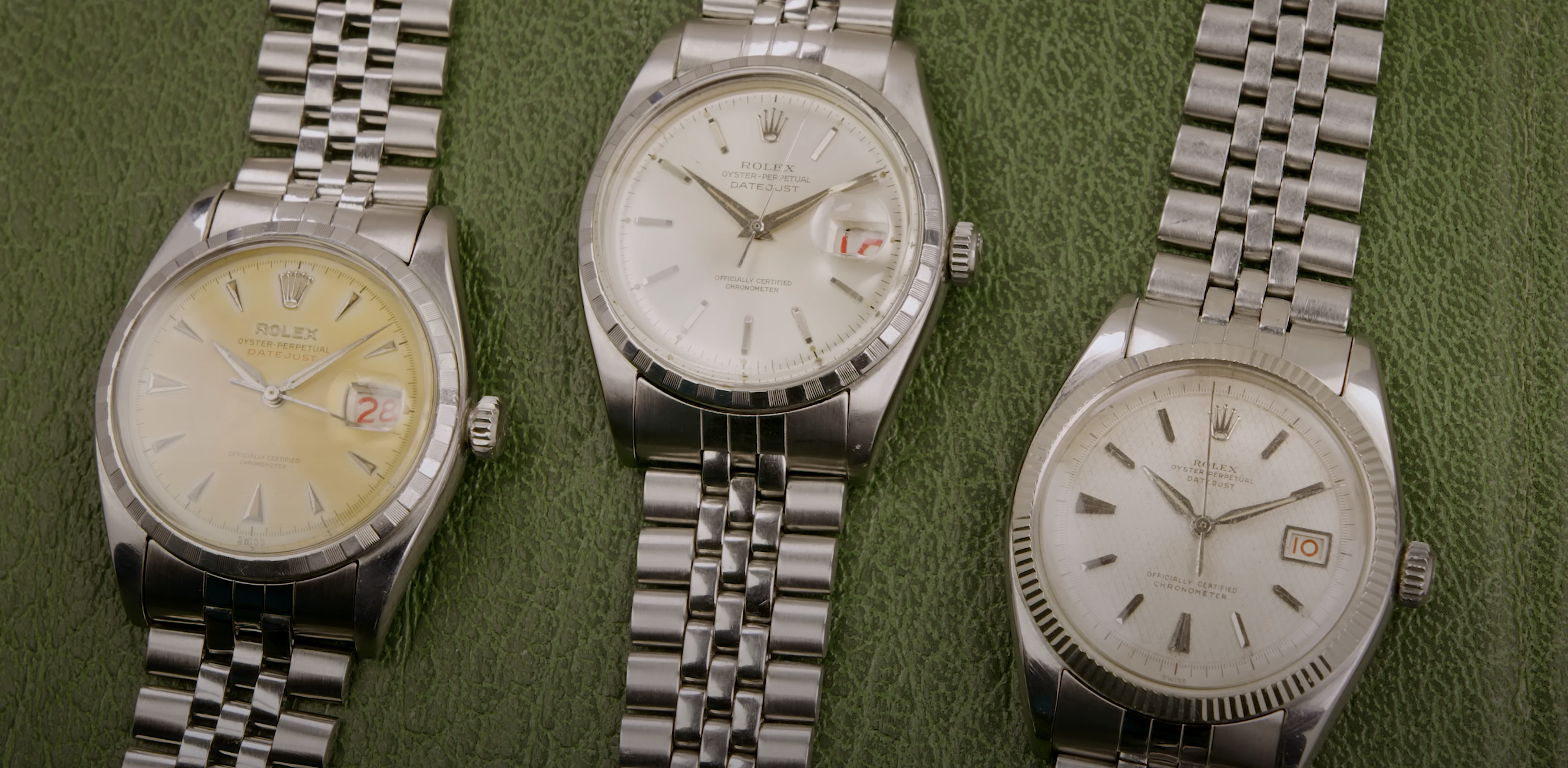
There are 3 shapes of dials used. Either flat, a tad convex with a domed periphery, or a soft “pie-pan”: less angular as the 16xx series. Last mentioned is seen on the most coveted type of dial, which isn’t one with a smooth surface but with a waffle motif instead; also known as “Honeycomb”. Not unique to the Datejust, Rolex used this embellishing pattern on multiple models in the 50’s: like the 6202 Turn-O-Graph and the 6350 Explorer. (among others) However, this is considered the pinnacle of steel Rolex Datejusts and the value can run into the 6 digits. Apart from the shade, black or white, there is also a variety in the cliché used. Besides the spacing and graphics of the font, the clearest difference can be found in the smooth outer track: one being divided into 10 segments per 5 minutes, the other 5 segments per minute.
To finish the last detail of this looker: the hands. Either Leaf hands or Alpha hands were used on the 6305
Conclusion
To many a steel Datejust is the most common luxury watch, but if you look a little further you will find a captivating niche with coveted models to collect. The origins are always interesting to discover and in this case we find many factors that turned out to be historically important. No wonder Hans Wilsdorf himself always and only wore a Rolex Datejust.